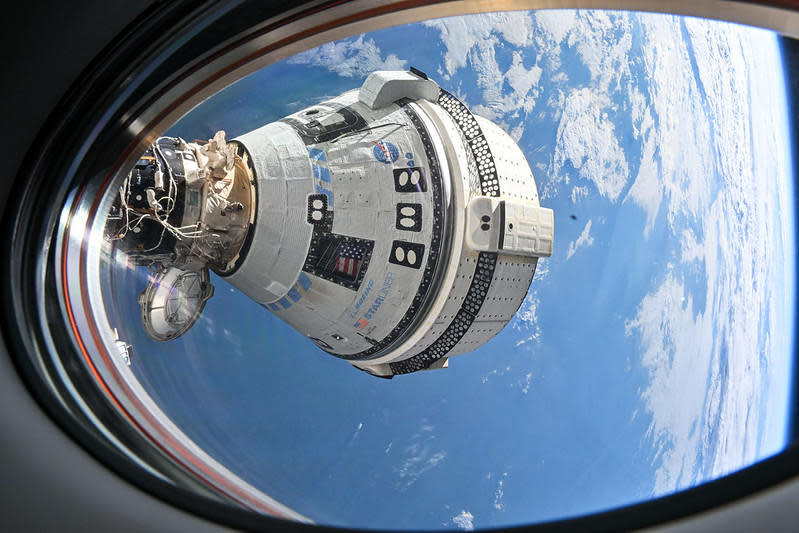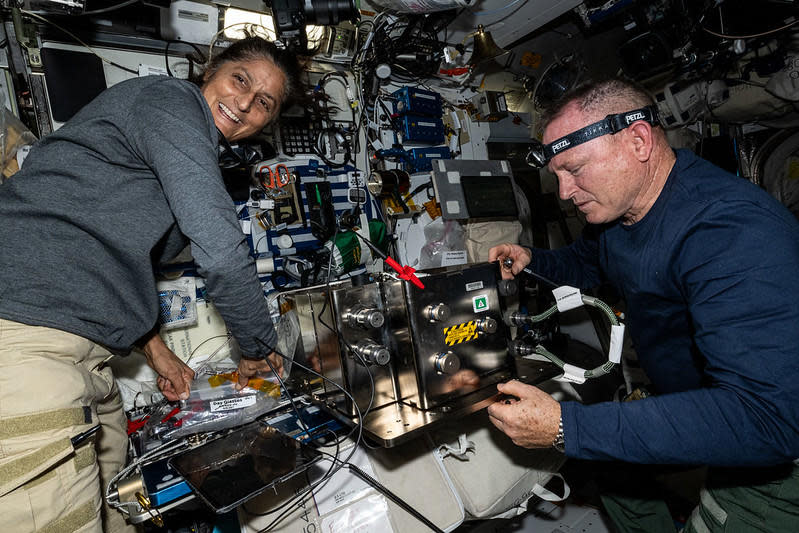NASA plans to hold an unprecedented agency-level readiness review as early as the end of next week to decide if Boeing’s Starliner capsule can safely bring its two crew members back to Earth, a senior manager said Wednesday.
If so, Starliner commander Barry “Butch” Wilmore and co-pilot Sunita Williams could undock from the International Space Station and head for home in early to mid-September, freeing up the lab’s forward port for docking by the next long-duration SpaceX crew later in the month.
But if managers conclude earlier Starliner thruster issues and helium leaks pose an unacceptable risk, Wilmore and Williams will extend their stay on the station and come home next February aboard the Crew Dragon.


In that case, the Starliner would robotically undock and attempt re-entry and landing on its own. The Crew Dragon would be launched Sept. 24 with two astronauts on board instead of four, freeing up two seats for use by Wilmore and Williams during the ship’s return early next year.
“We’re expecting that the data analysis will be ready for a (review) middle to end of next week, and that would be ready for a flight readiness review around the end of next week, potentially beginning of the following week,” said Ken Bowersox, a former astronaut who now serves as NASA’s chief of space operations.
“I know everybody would like a date. We’ve got some working dates, but … we need to to maintain that flexibility so that we make sure that we’re ready for the meeting before we have it. … We’ve got time available before we bring Starliner home, and we want to use that time wisely.
Wilmore and Williams blasted off atop an Atlas 5 rocket on June 5. During approach to the space station the next day, five aft-facing thrusters provided lower thrust than expected and four helium leaks developed in the propulsion system plumbing, adding to another small leak that was known before launch.
Ever since, engineers have been reviewing telemetry, carrying out thruster tests in orbit and on the ground to pin down the cause of the degraded performance. Both systems are critical to enabling the ship to safely depart the station, re-enter the atmosphere and land in the western United States.


“They have been at this very hard for a very long time, very dedicated to get to the right answer, whatever that might be,” said Russ DeLoach, chief of NASA Safety and Mission Assurance. “I am confident that our process is moving to a good decision for the right path to get both Starliner and her crew home.”
DeLoach said at least part of the reason the review has dragged on so long is the result of changes in the wake of the Columbia shuttle disaster to make sure engineers up and down the chain of command can voice concerns about technical issues and be sure those views make it into the decision-making process.
“At that time, the program managers pretty much had near unilateral decision making,” DeLoach said. “And so, if there were views that maybe a path we were taking was not correct, there was really no strong additional authority to step in and say ‘wait a minute.'”
“For me, personally, I’ve been very hyper focused lately on on this concept of combating organizational silence. If you look at both, unfortunately, Challenger and Columbia, you can see cases where people had the right data or a valid position to put forward, but the environment just didn’t allow it.”
That has changed, he said, but “I recognize that may mean, at times, we don’t move very fast because we’re getting everything out. And I think you can kind of see that at play here. … We need to be very careful to make sure that everybody’s perspective is shared.”
After the most recent program control board meeting where the Starliner data collected to date was discussed, Bowersox said some engineers favored clearing the ship for a piloted return to Earth as is, some were opposed and some wanted more time to review additional data.
He did not say which option had the most support.
Paul Whelan’s lawyer says U.S. needs “system of deterrence” to prevent hostage diplomacy
U.S. prepares for possible Iranian retaliation against Israel
Trump, Harris criticize each other over economic policies
